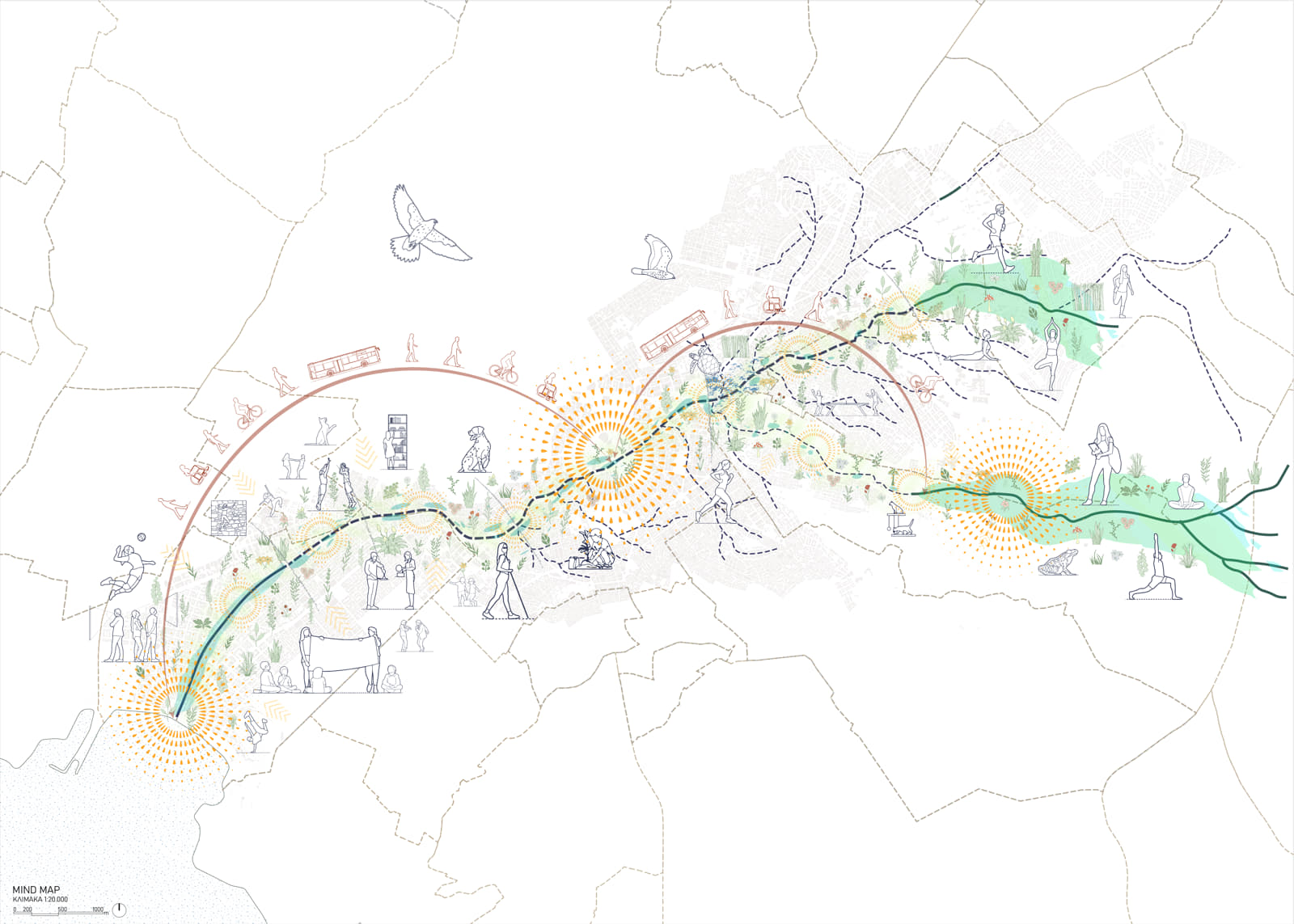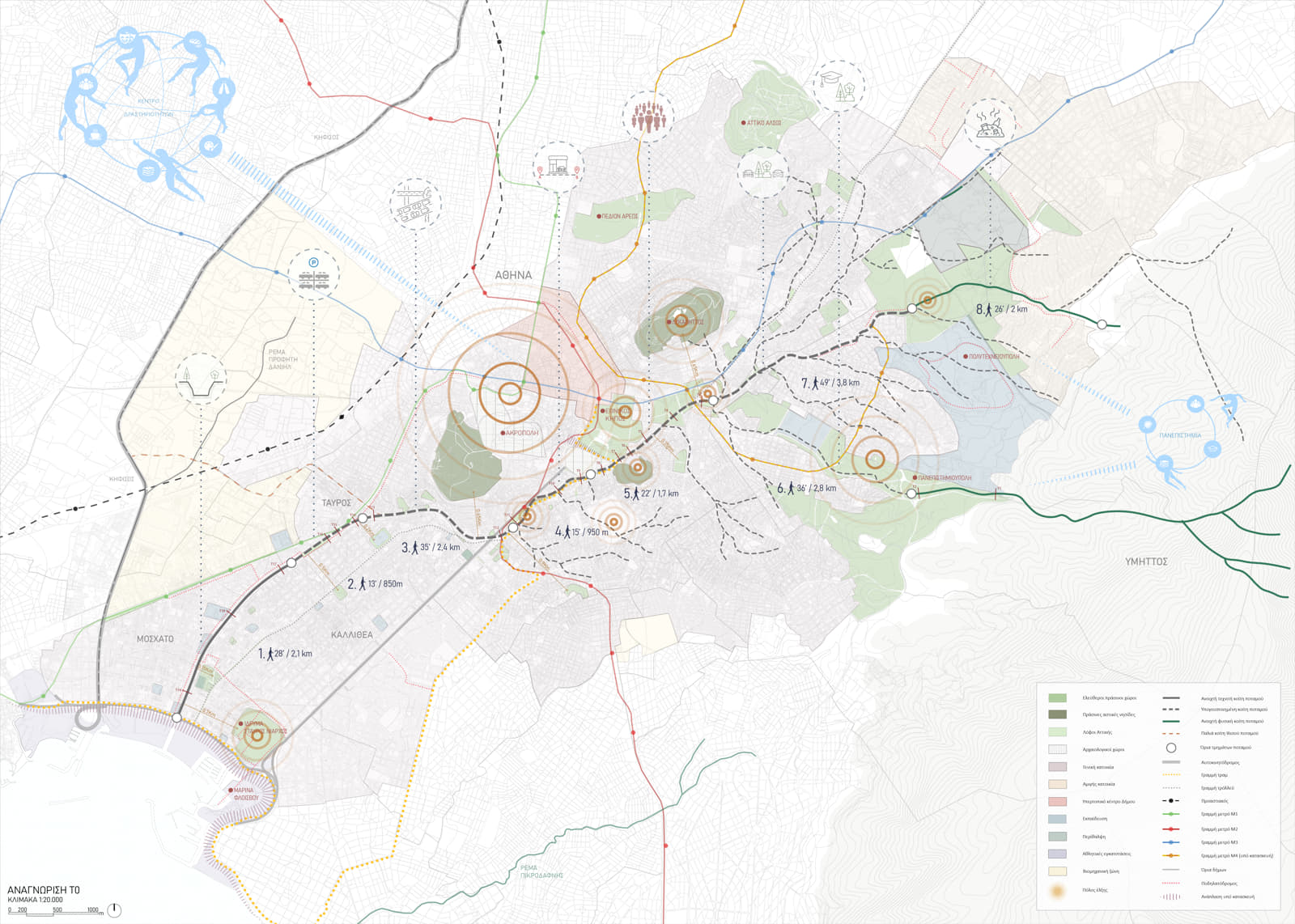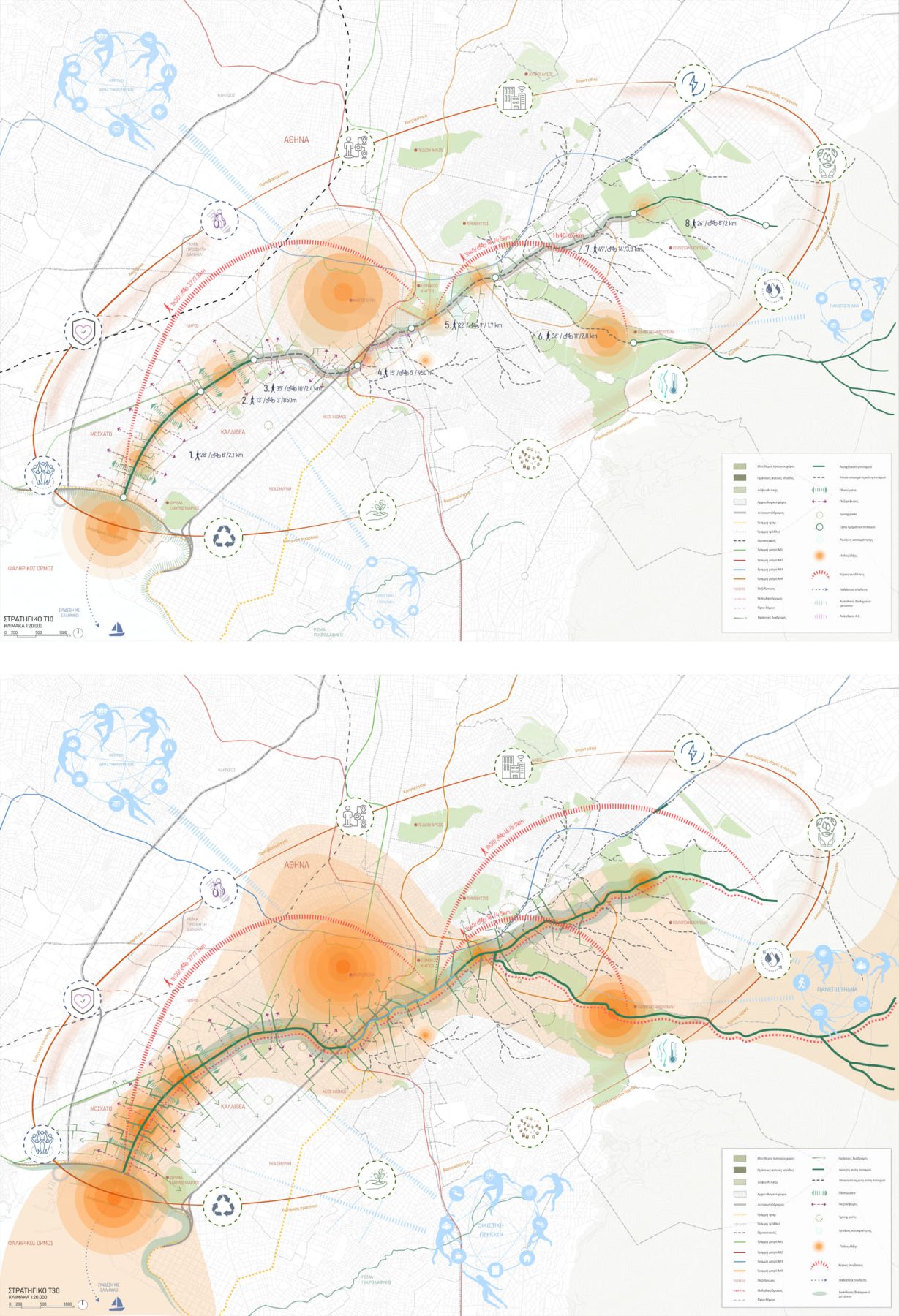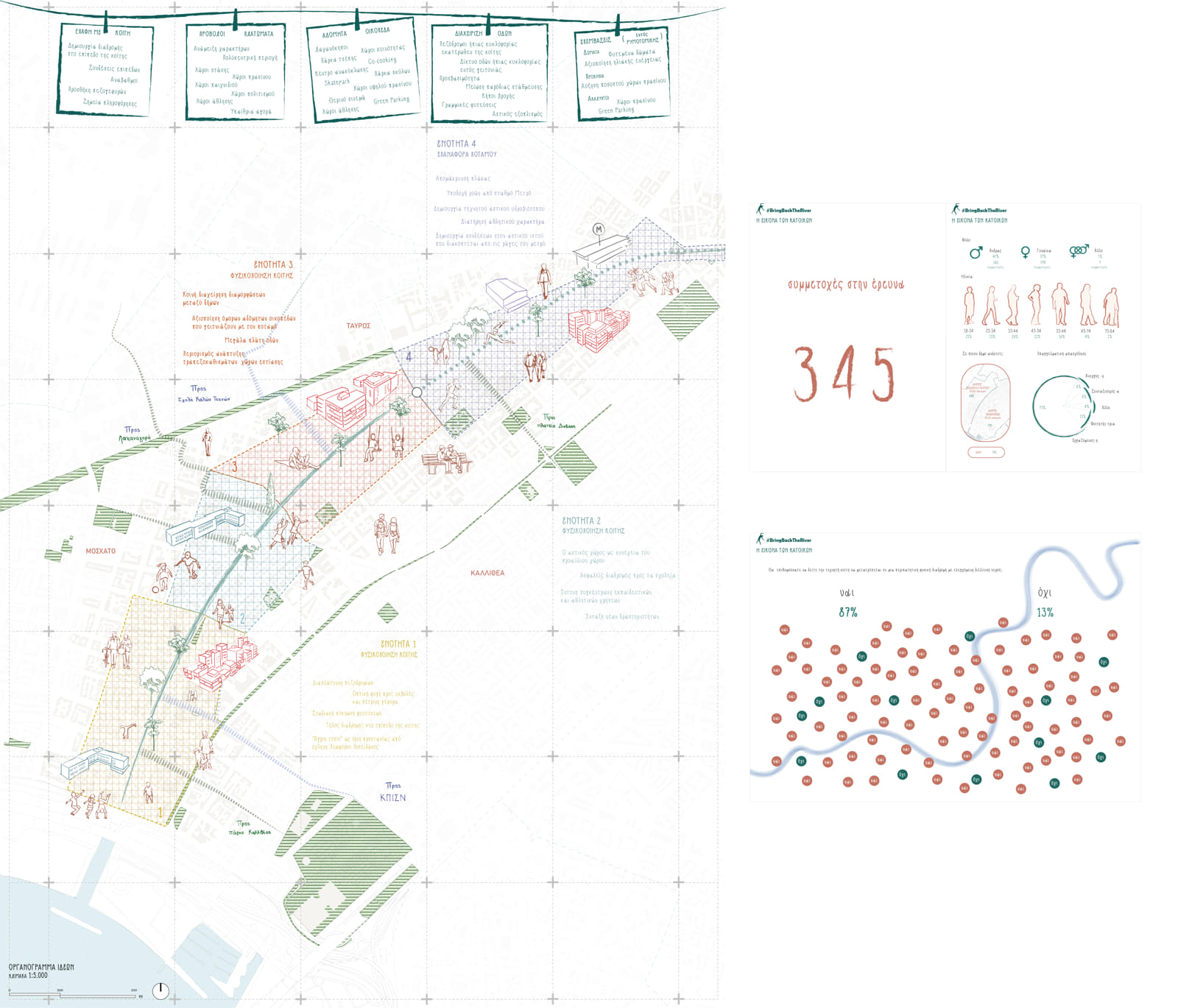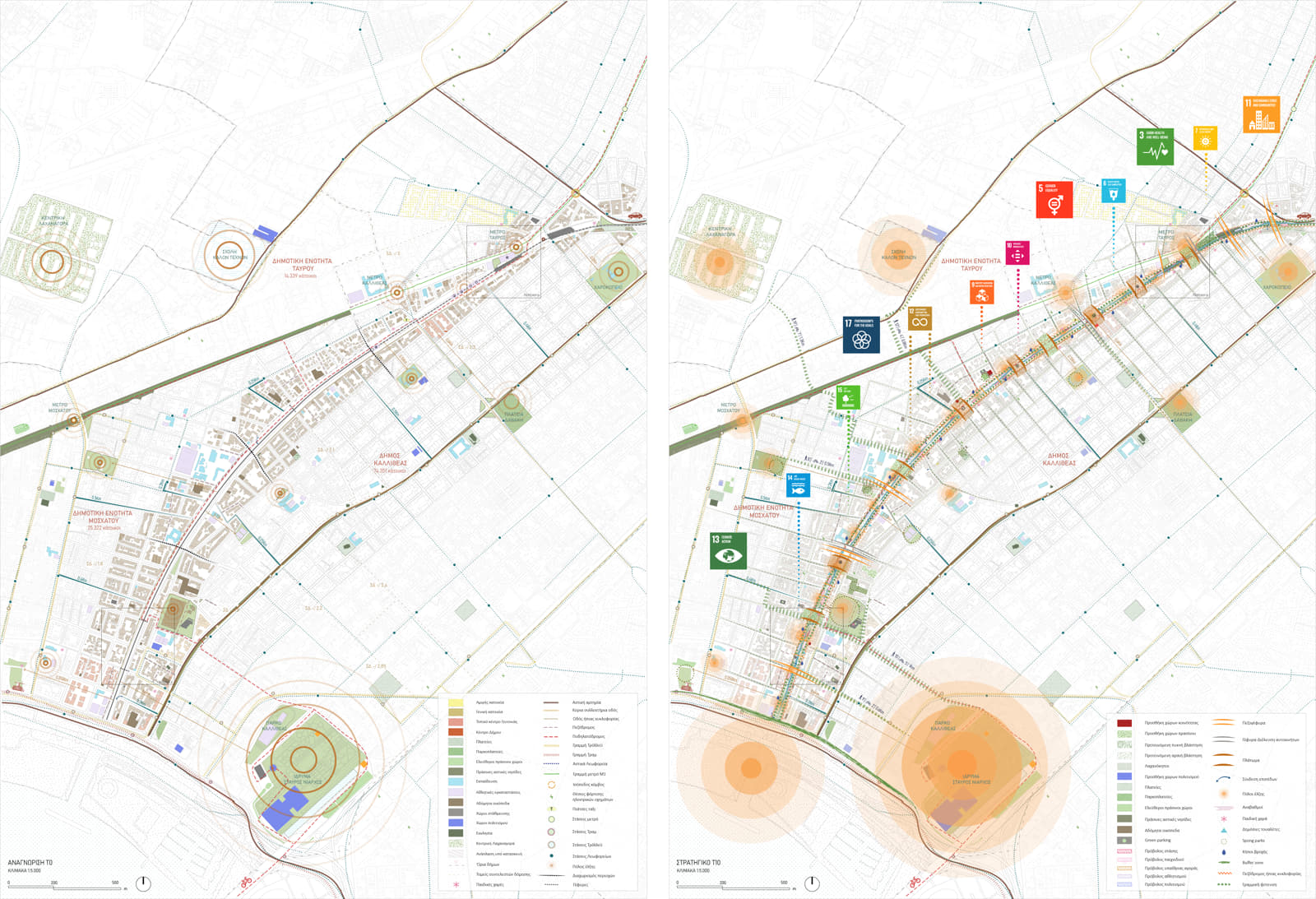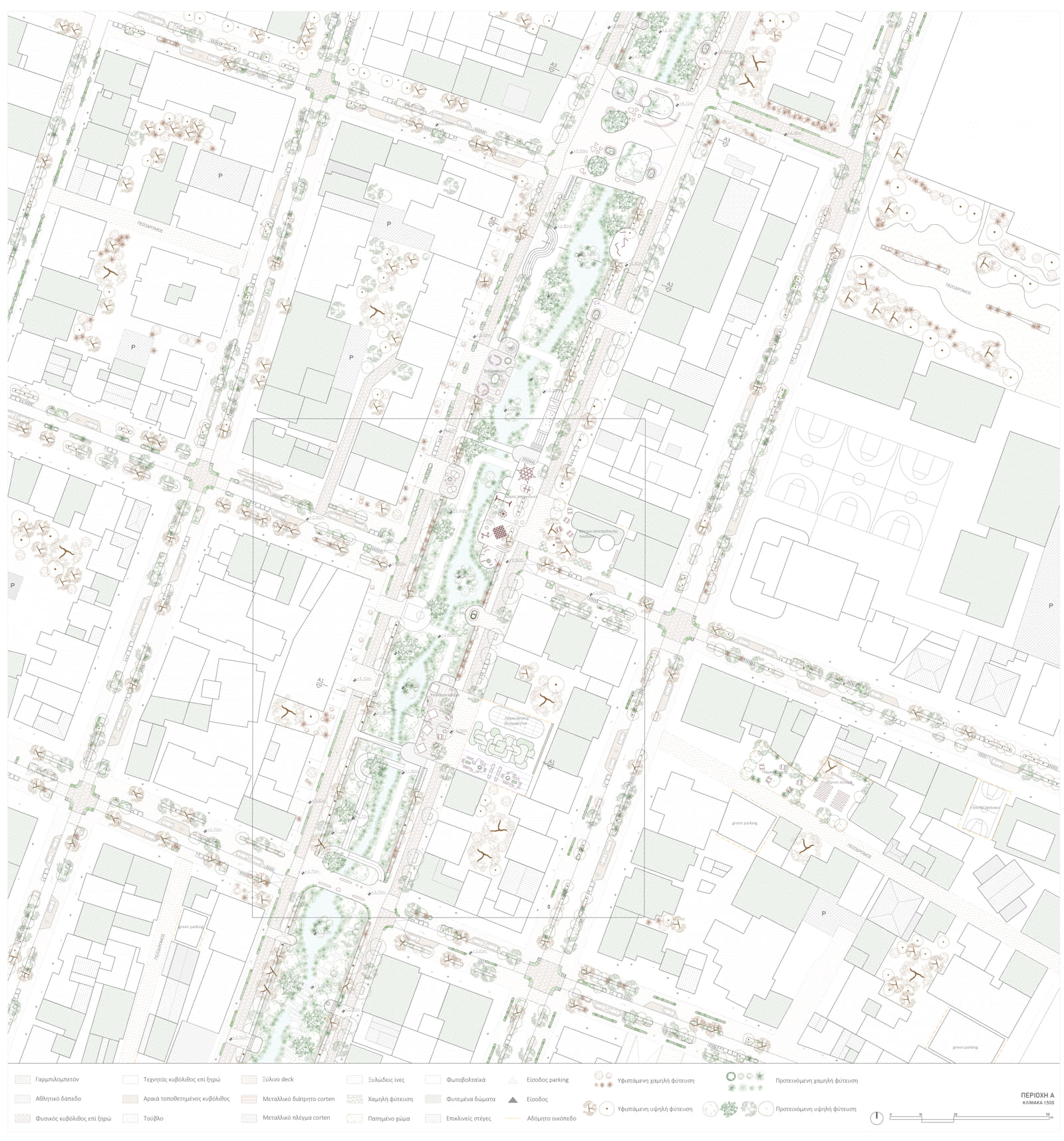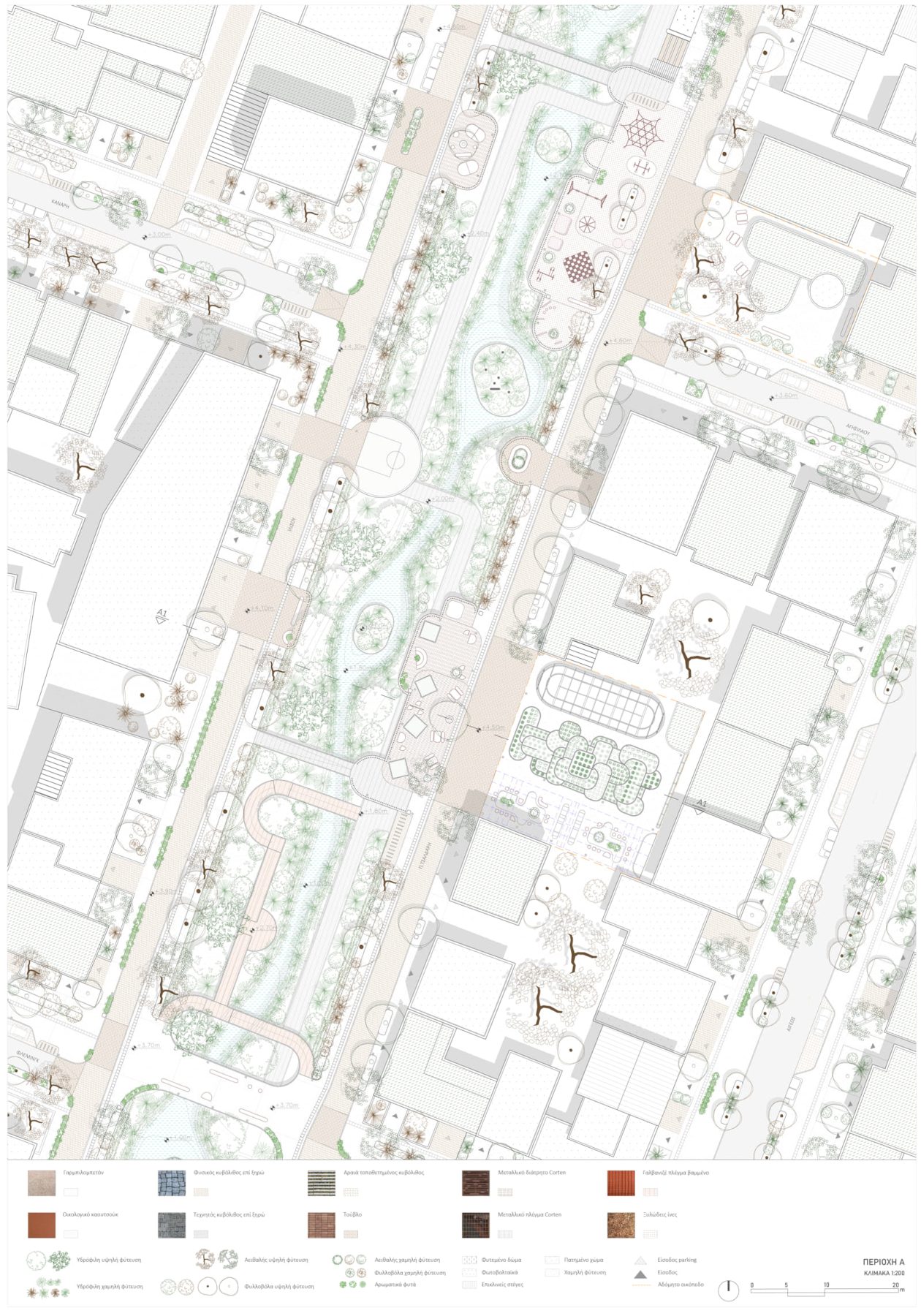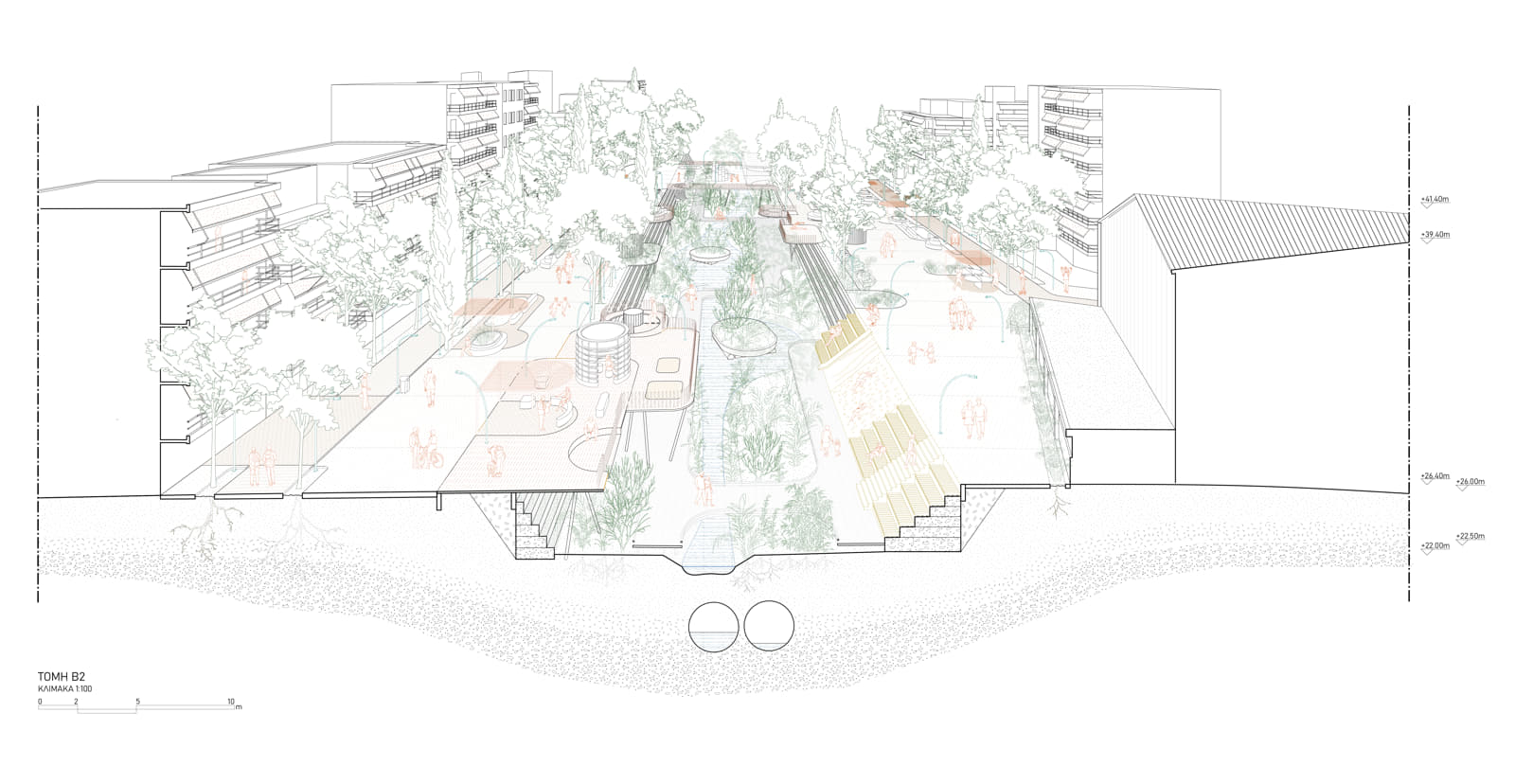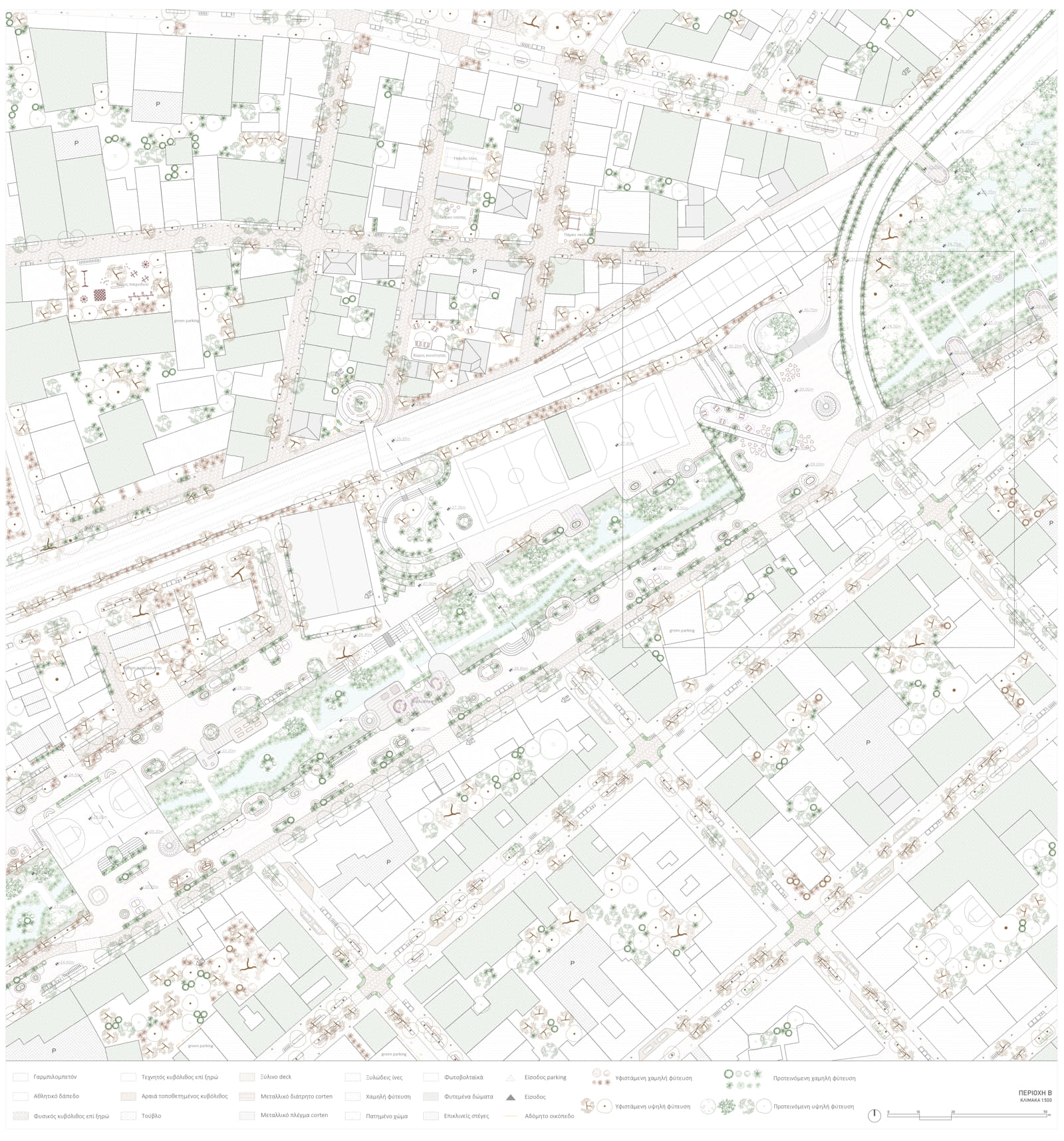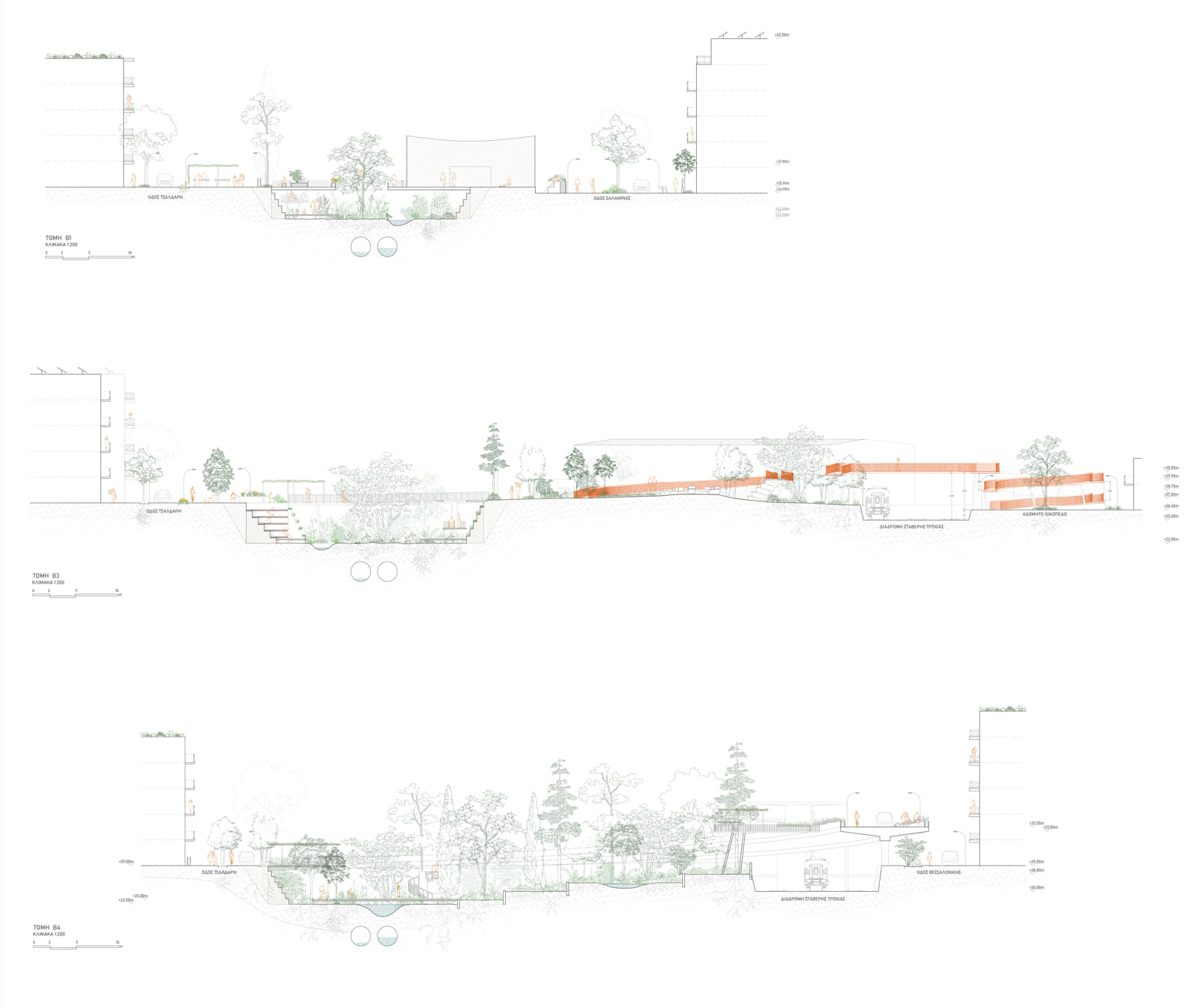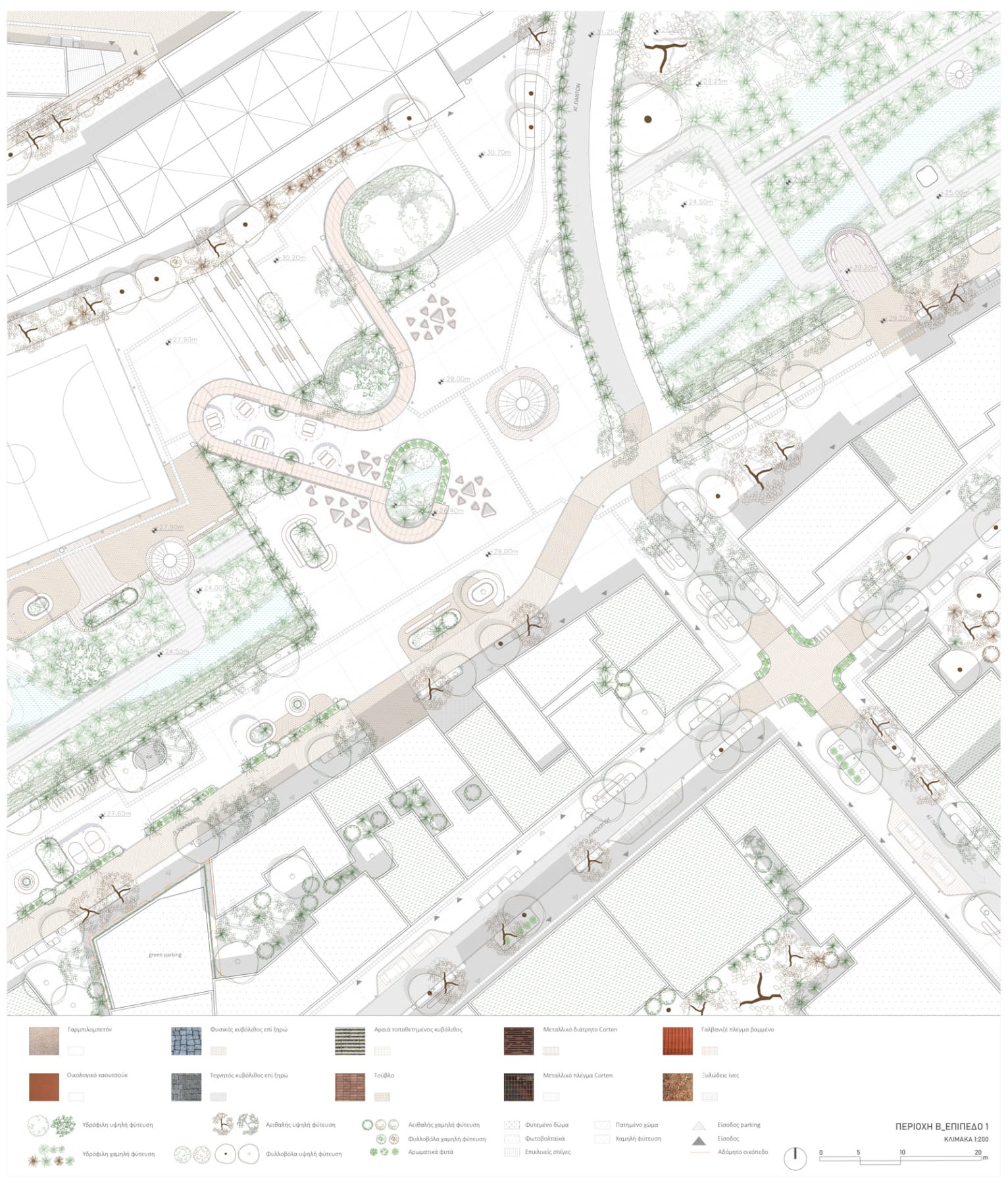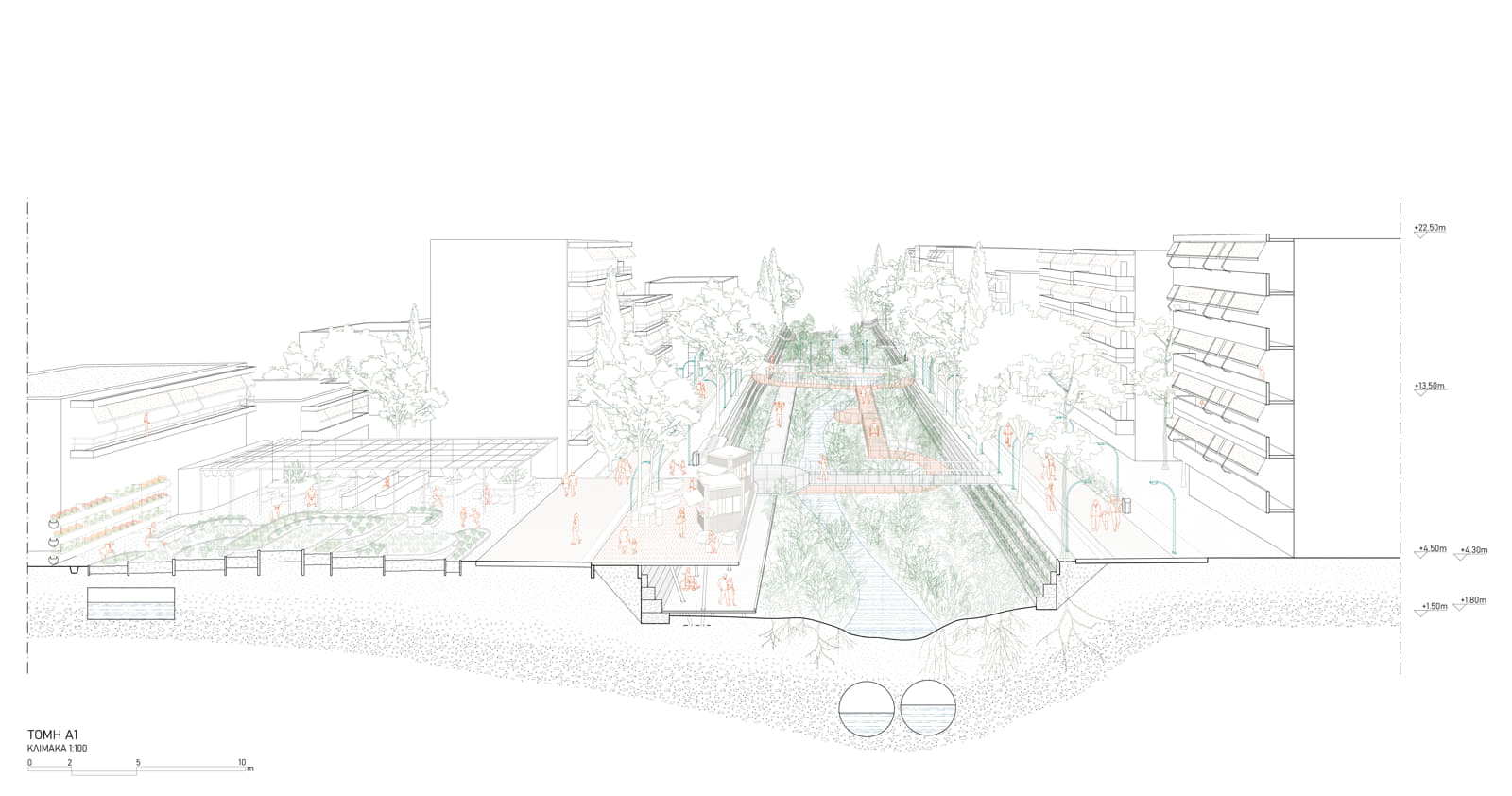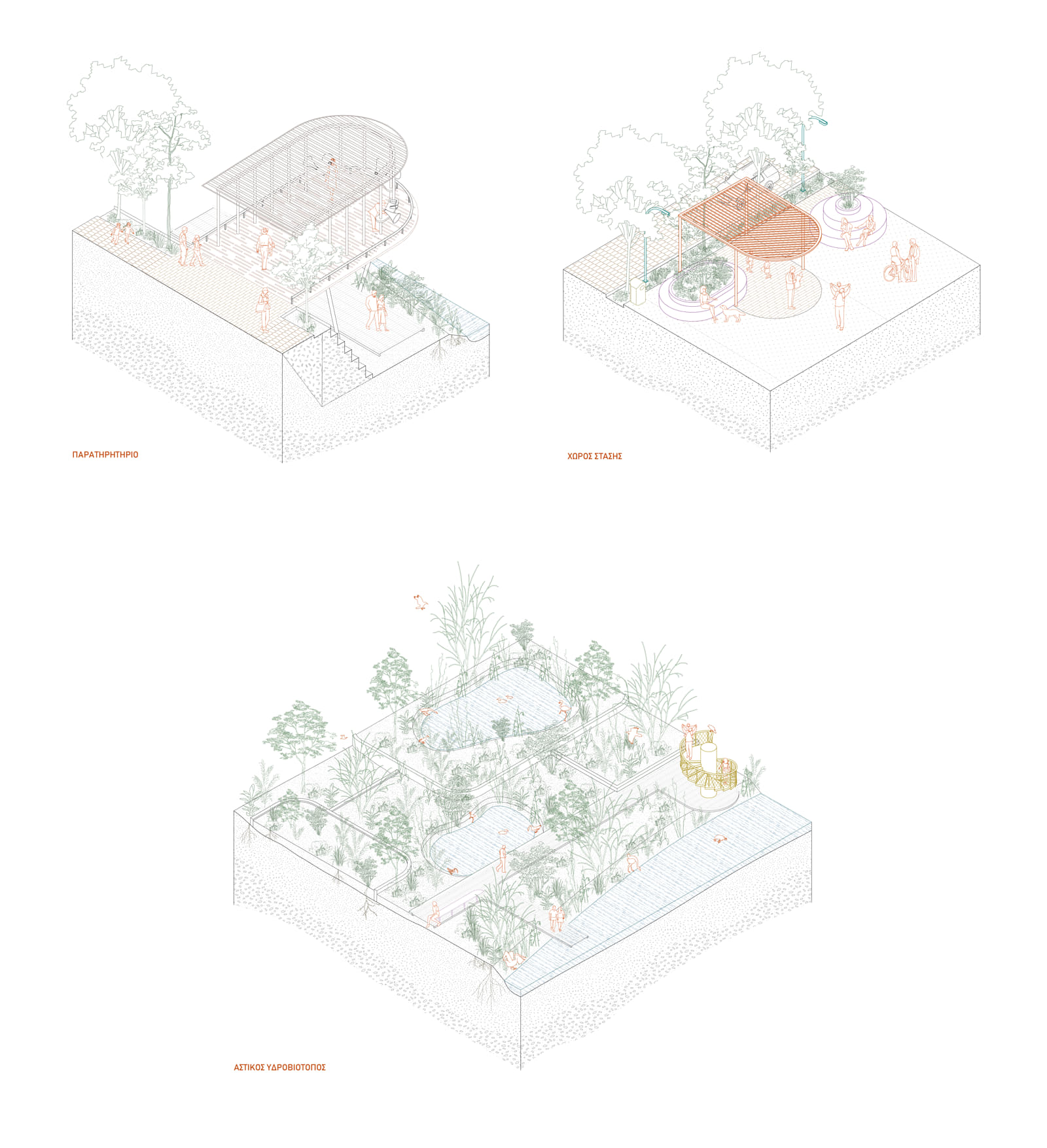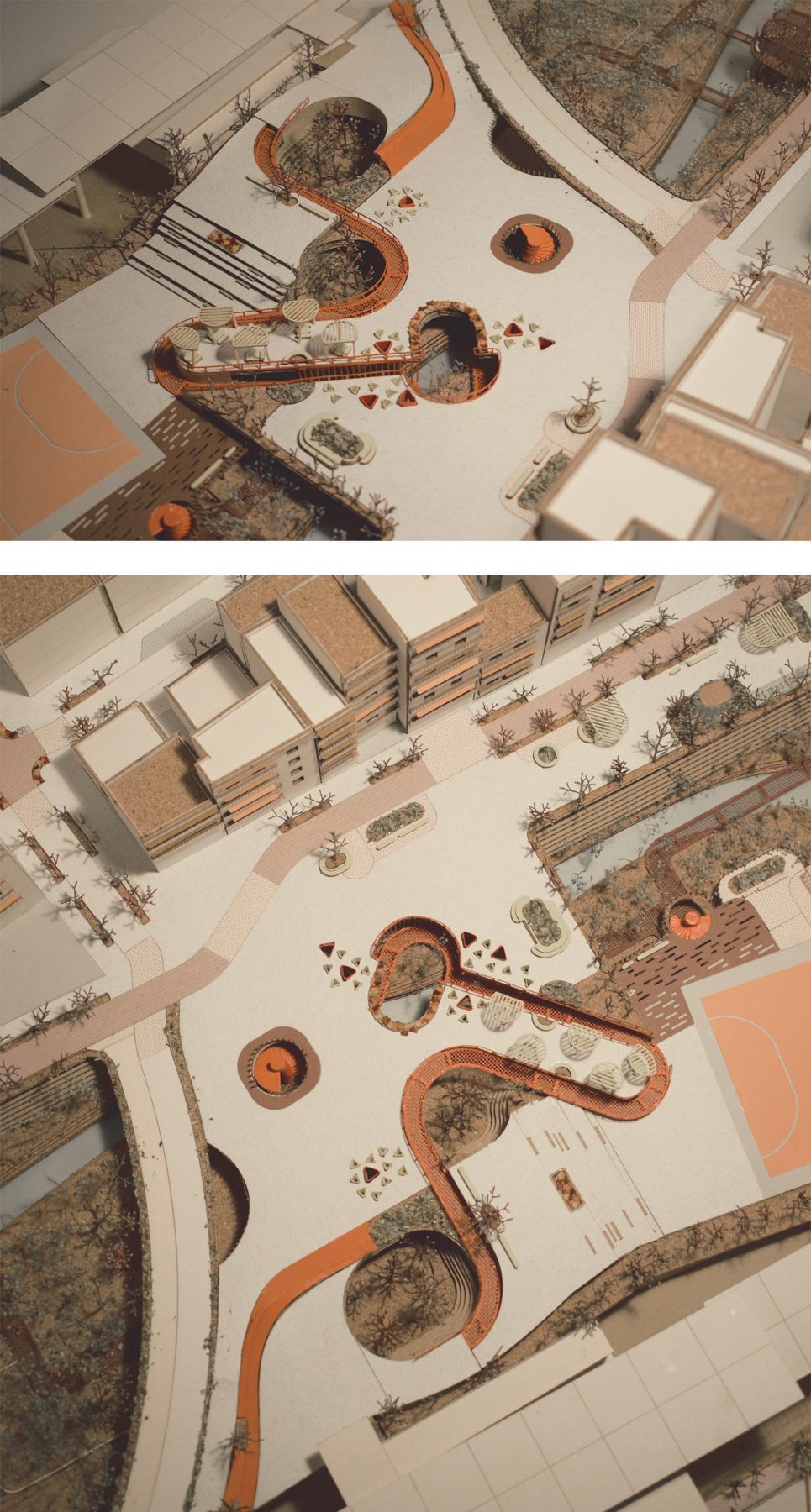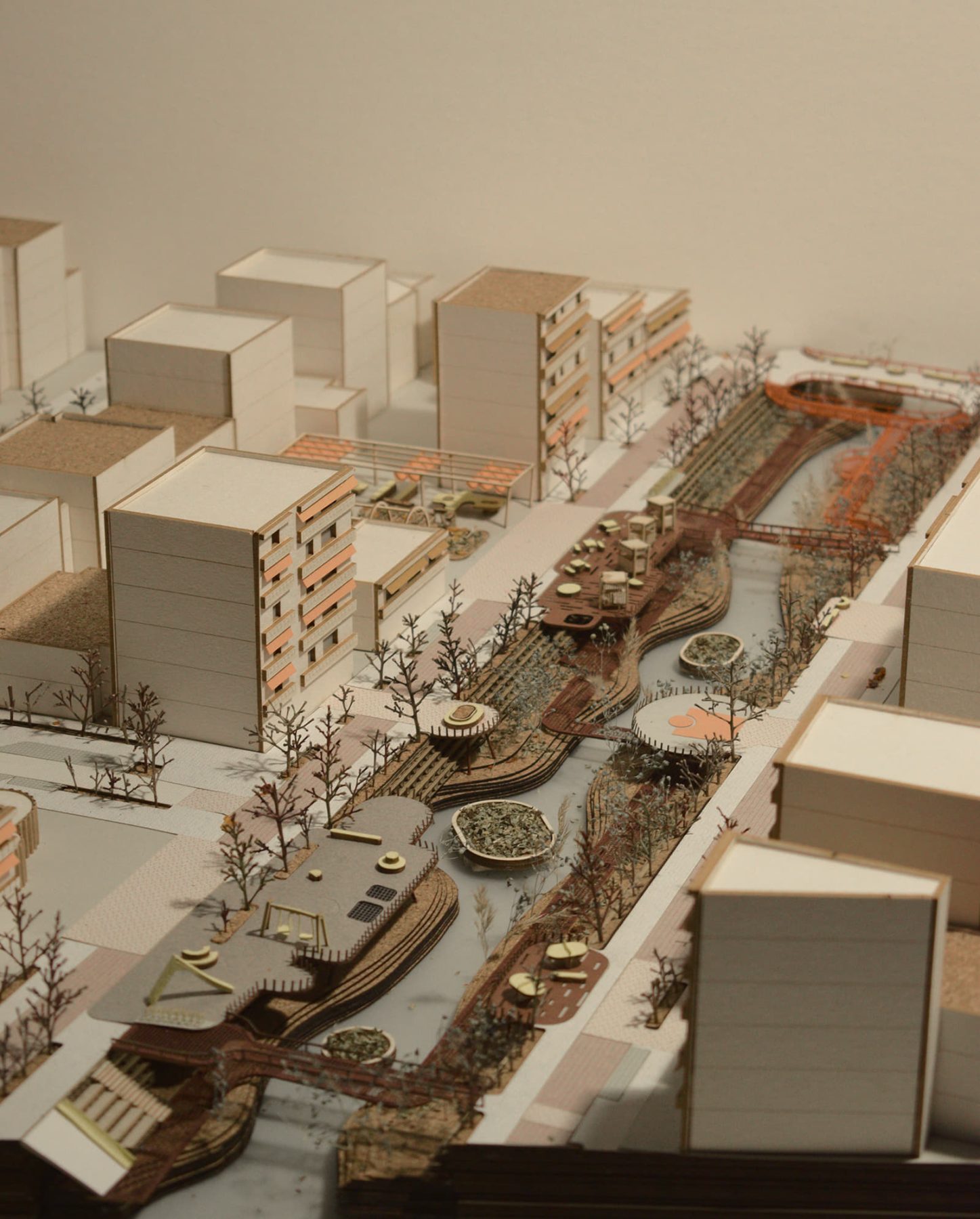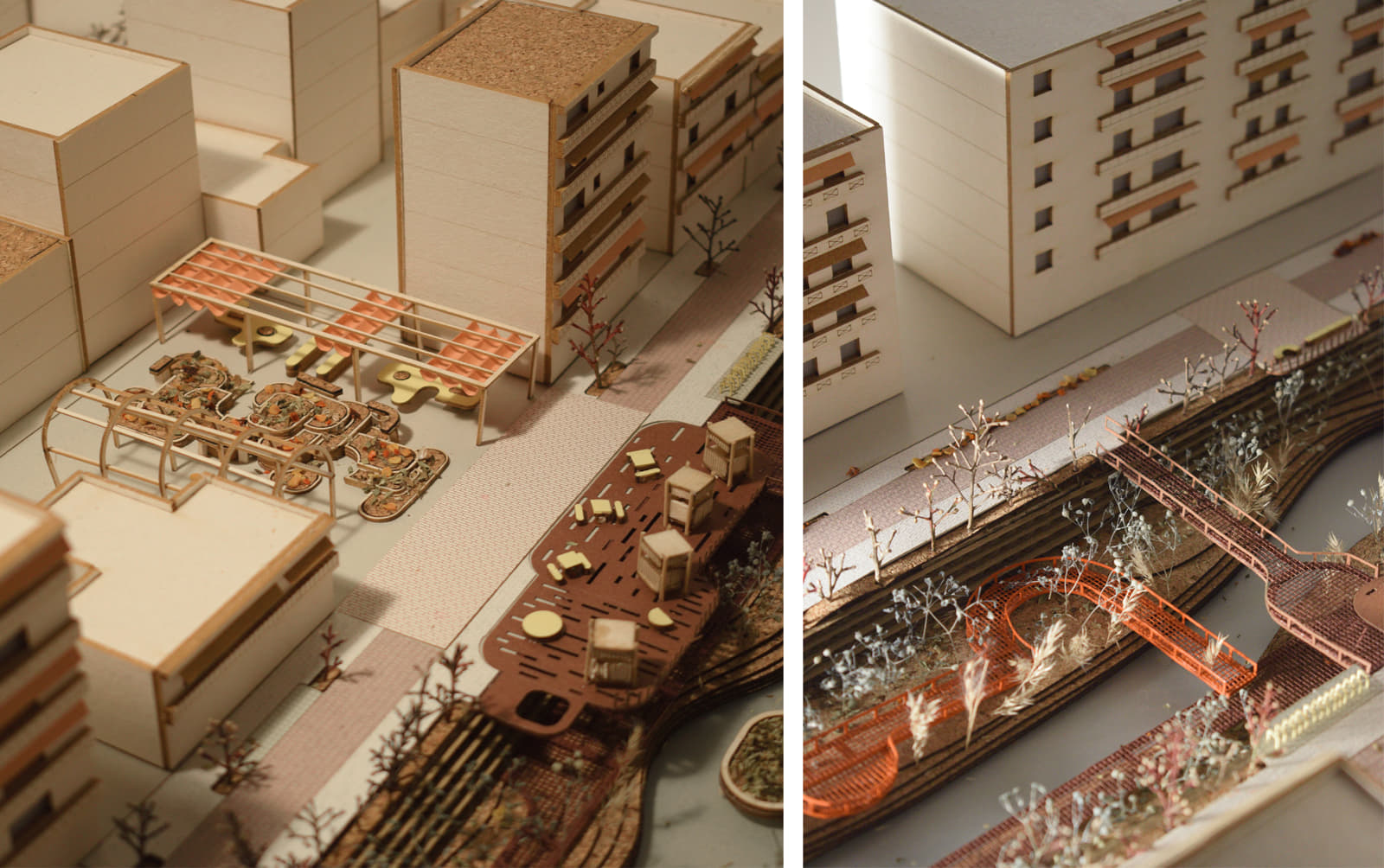Μέσω βιβλιογραφικής και επιτόπιας έρευνας πεδίου, η Διπλωματική εργασία #BringbacktheRiver των Λεγάκη Μαρία Ειρήνη, Ξενοπούλου Κλειώ και Παπαθανασίου Χριστίνα ερευνά την σχέση του ποταμού Ιλισού με την πόλη και τους κατοίκους της Αθήνας. Η εργασία αφορά στην ανάπτυξη περιβαλλοντικών και κοινωνικών στρατηγικών για την αποκατάσταση του φυσικού οικοσυστήματος την και σταδιακή επανένταξη του ποταμού Ιλισού στον αστικό ιστό της Αθήνας.
Η Αθήνα, ήδη από την αρχαιότητα, θεωρούνταν υδρολογικά φτωχή, ωστόσο διέθετε ποτάμια και ρέματα που σταδιακά εξαφανίστηκαν.
Ο Ιλισός, ο δεύτερος μεγαλύτερος ποταμός της, αν και άλλοτε σημαντικό φυσικό στοιχείο της πρωτεύουσας, καλύφθηκε και εγκιβωτίστηκε κάτω από οδικές αρτηρίες, χάνοντας τον ρόλο του ως πηγή ζωής και οικολογικής ισορροπίας.
Σήμερα, ελάχιστα τμήματά του παραμένουν ορατά, ενώ παράλληλα γίνονται συζητήσεις για τη σημασία της επανένταξής του στο αστικό τοπίο, τόσο για λόγους περιβαλλοντικής αναβάθμισης και ανακούφισης από τις κλιματικές επιπτώσεις, όσο και για την αποκατάσταση της σχέση των ανθρώπων με τη φύση και το υδάτινο στοιχείο.
Η αρχική έρευνα εστιάζει στην ιστορία του ποταμού και στην εξέλιξη της σχέσης του με την πόλη.
Χρησιμοποιήθηκαν διαφορετικές χωρικές κλίμακες ανάλυσης, από το λεκανοπέδιο μέχρι το επίπεδο αστικού σχεδιασμού, με στόχο την ανάδειξή του ως βασική πράσινη διαδρομή, ενισχύοντας το φυσικό στοιχείο και την ποιότητα ζωής των κατοίκων.
Για την κατανόηση του ποταμού, πραγματοποιήθηκε επιτόπια έρευνα από το ρέμα Παπάγου έως τις εκβολές του στον Φαληρικό όρμο.
Στην περιοχή διακρίνονται οκτώ διαφορετικές ενότητες με βάση τα κυρίαρχα χαρακτηριστικά τους, ενώ ταυτόχρονα εξετάζεται η σημερινή τους κατάσταση και αναπτύσσονται περιβαλλοντικές και κοινωνικές στρατηγικές, με σκοπό την αποκατάσταση του Ιλισού σε βάθος 10 και 30 ετών.
Βασιζόμενοι σε αυτά τα δεδομένα, η σχεδιαστική πρόταση αφορά τη μετατροπή της κοίτης του Ιλισού σε μια ενιαία πράσινη διαδρομή.
Στον ορίζοντα 30 ετών, μάλιστα, το όραμα της μελέτης είναι η πλήρης επαναφορά του Ιλισού και η ενσωμάτωσή του σε μια νέα, βιώσιμη πόλη, όπου το υδάτινο στοιχείο, το πράσινο και η κοινότητα θα βρίσκονται στο επίκεντρο του αστικού σχεδιασμού.
Η μελέτη επικεντρώνεται σε στοχευμένη παρέμβαση στις δύο πρώτες ενότητες του άξονα του Ιλισού, επιδιώκοντας την ανάδειξη του ποταμού από όριο, σε σημείο σύνδεσης των όμορων δήμων Καλλιθέας και Μοσχάτου.
Η περιοχή χαρακτηρίζεται από έντονο οικιστικό χαρακτήρα, γειτνίαση με σημαντικούς πολιτιστικούς και εκπαιδευτικούς φορείς και προοπτικές αστικής ανάπτυξης λόγω της ανάπλασης του Φαληρικού Όρμου.
Μέσω έρευνας πεδίου, διαλόγου με την τοπική κοινότητα και ενός ερωτηματολογίου 345 συμμετοχών, καταγράφηκαν οι ανάγκες των κατοίκων και οι προσδοκίες τους για την επαναφορά του Ιλισού.
Τα αποτελέσματα οδήγησαν στη διαμόρφωση σχεδιαστικών αρχών που περιλαμβάνουν τη δημιουργία ενιαίας φυσικής διαδρομής, βελτίωση της προσβασιμότητας, ενίσχυση του πρασίνου και ανάπτυξη δημόσιων χώρων συνάντησης και δραστηριοτήτων. Οι προτάσεις ευθυγραμμίζονται με τους στόχους βιώσιμης ανάπτυξης του ΟΗΕ, στοχεύοντας σε μια πιο πράσινη, προσβάσιμη και βιώσιμη αστική εμπειρία.
Στην συνέχεια, η μελέτη εστιάζει σε δύο επιμέρους περιοχές, όπου αναπτύσσεται λεπτομερής σχεδιαστική επίλυση.
Η πρώτη περιοχή παρέμβασης τοποθετείται κοντά στις εκβολές του Ιλισού, όπου φυσικοποιείται το ανοιχτό τεχνητό τμήμα της κοίτης, ενώ η δεύτερη στον σταθμό του μετρό Ταύρος, όπου αποκαλύπτεται ο πλήρως υπογειοποιημένος ποταμός.
Βασικοί στόχοι της παρέμβασης είναι η βιοκλιματική αναβάθμιση, η αποκατάσταση του κύκλου του νερού και η ενίσχυση της βιοποικιλότητας στον αστικό ιστό με χρήση πράσινων υποδομών.
Τέλος, προτείνονται νέες χρήσεις, η ενίσχυση των χώρων κοινότητας και συχνές συνδέσεις των επιπέδων, ενώ σημαντικές αρχές είναι η κυκλική οικονομία, η συμπερίληψη και η προσβασιμότητα από όλους.
Έτσι, ολοκληρώνεται μία εκτενής μελέτη πιλοτικής πρότασης αναδεικνύοντας τη σημασία της αποκατάστασης του ποταμού Ιλισού, με στόχο η Αθήνα να μετατραπεί σε μία βιώσιμη πόλη με επίκεντρο τον άνθρωπο και τη φύση.
Στοιχεία έργου
Τίτλος έργου #BringbacktheRiver: Επανένταξη τμήματος του Ιλισού στον αστικό ιστό της Αθήνας
Τύπος έργου Διπλωματική Εργασία
Φοιτήτριες Λεγάκη Μαρία Ειρήνη, Ξενοπούλου Κλειώ, Παπαθανασίου Χριστίνα
Επιβλέπουσα καθηγήτρια Αθηνά Βιτοπούλου
Ημερομηνία παρουσίασης Φεβρουάριος 2025
Πανεπιστημιακό ίδρυμα Σχολή Αρχιτεκτόνων Aηχανικών, Αριστοτέλειο Πανεπιστήμιο Θεσσαλονίκης (ΑΠΘ)
Κείμενο από τις δημιουργούς
Through bibliographic and on-site field research, the thesis project #BringbacktheRiver by Maria Eirini Legaki, Kleio Xenopoulou, and Christina Papathanasiou explores the relationship between the Ilisos River and the city and residents of Athens. The project focuses on the development of environmental and social strategies for the restoration of the natural ecosystem and the gradual reintegration of the Ilisos River into the urban fabric of Athens.
Since ancient times, Athens has been considered hydrologically deficient; however, it historically possessed rivers and streams that have gradually disappeared.
Ilisos River, the city’s second-largest river, was once a significant natural feature of the capital. Over time, it was systematically covered and confined beneath urban infrastructure, primarily road networks, diminishing its role as a vital ecological and hydrological asset.
Nowadays, only limited sections remain visible, while discussions are underway about its reintegration into the urban fabric. Such reintegration is considered crucial for environmental restoration, climate resilience, and the reestablishment of people’s connection with nature and water.
This study examines the historical trajectory of Ilisos River and its evolving relationship with the urban environment.
A multi-scalar analytical approach was employed, encompassing spatial scales from the broader Attica basin to the level of urban planning, with the aim of re-establishing the river as a key ecological corridor. Strengthening the presence of natural elements within the urban landscape is fundamental to enhance environmental sustainability and improve residents’ quality of life.
To develop a comprehensive understanding of the river, an extensive field survey was conducted, tracing its course from the Papagos stream to its mouth at Faliro Bay.
The study identified eight distinct segments classified by their predominant characteristics, systematically analyzing their current condition and developing strategic environmental and social interventions for Ilisos’s restoration within 10- and 30-year timeframes.
Based on this analysis, the design proposal envisions transforming Ilisos riverbed into a continuous green corridor.
Over a 30-year horizon, the study’s vision is the complete restoration of Ilisos and its integration into a sustainable city where water, greenery, and community are central to urban planning.
The research specifically concentrates on targeted interventions within the first two segments of the river, seeking to redefine Ilisos from a spatial boundary to a connective element between the municipalities of Kallithea and Moschato.
This area is characterized by a dense residential character, proximity to cultural and educational institutions, and urban development prospects due to the Faliro Bay redevelopment.
Field observations, dialogues with the local community, and a survey of 345 participants provided critical insights into residents’ needs and expectations regarding the river’s restoration.
Through this participatory approach a variety of design principles was established, including the creation of a continuous natural pathway, enhancement of accessibility, expansion of green spaces, and the development of public areas for social interaction and recreation. These interventions align with the UN Sustainable Development Goals, advancing a vision for a more ecologically resilient, accessible, and sustainable urban environment.
Subsequently, the study develops detailed design interventions in two key sub-areas.
The first is located near the river’s mouth, where the existing artificial open section of the riverbed is naturalized. The second is at Tavros metro station, where the currently subterranean river is revealed.
The primary objectives of these interventions include bioclimatic upgrading, the restoration of the water cycle, and the enhancement of urban biodiversity through green infrastructure.
Furthermore, the proposals advocate for new land uses, expanded communal spaces, and frequent vertical connections, emphasizing circular economy principles, inclusivity, and universal accessibility.
This study presents a comprehensive pilot proposal that highlights the significance of restoring Ilisos River, aiming to contribute to the transformation of Athens into a sustainable city that prioritizes human well-being and ecological integrity in urban planning and policy-making.
Facts & Credits
Project title #BringbacktheRiver: Reintegration of Ilissos river in the urban landscape of Athens
Type Diploma Thesis
Students Legaki Maria Eirini, Papathanasiou Christina, Xenopoulou Kleio
Supervisor Athina Vitopoulou
Presentation Date February 2025
University School of Architecture, Aristotle University of Thessaloniki (AUTh)
Text by the authors
READ ALSO: Σχολή Εφαρμοσμένων Τεχνών στην Πόλη της Ξάνθης | Διπλωματική εργασία από τις Νικολέτα Ναθαναηλίδου και Βικτωρία Στάικου
